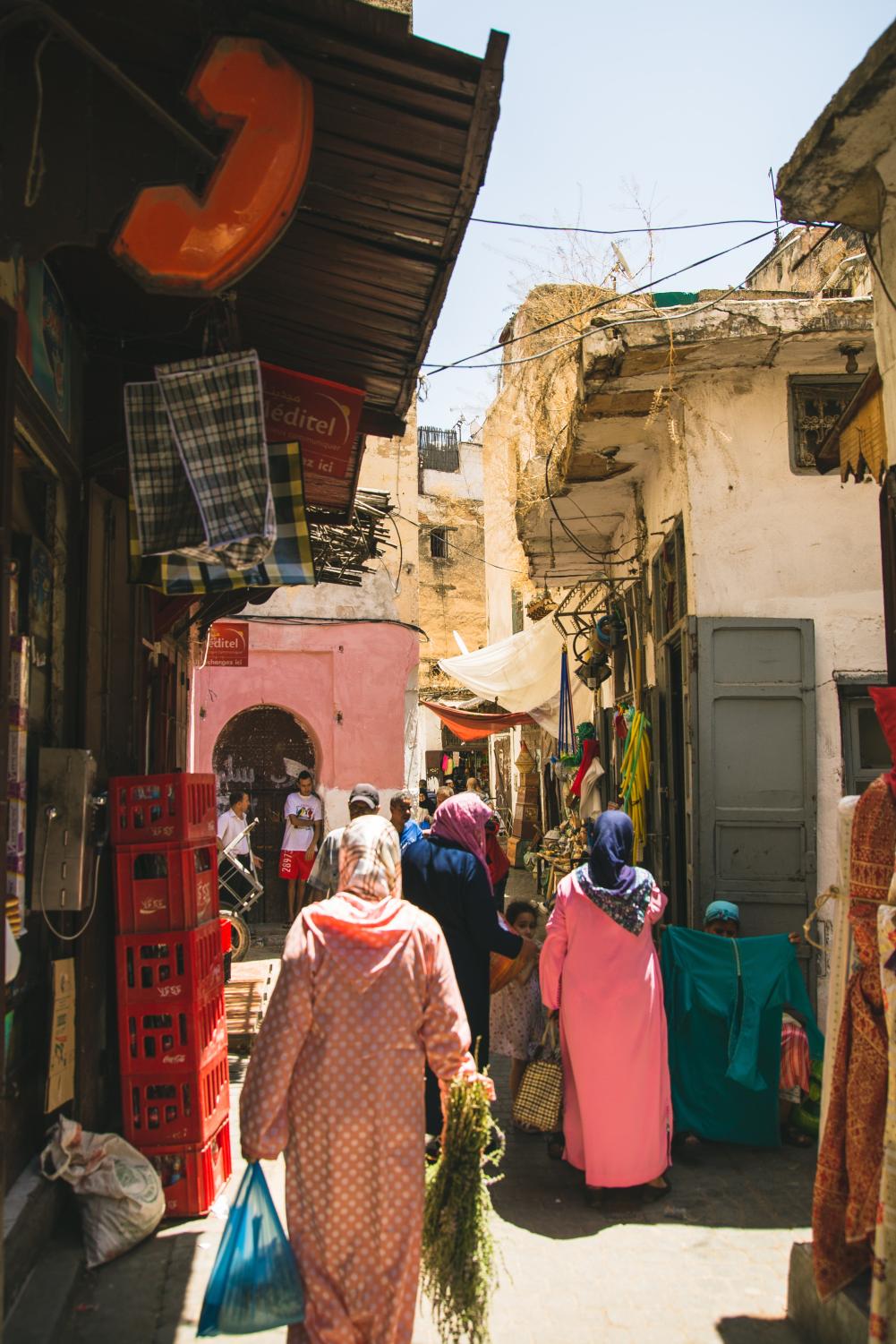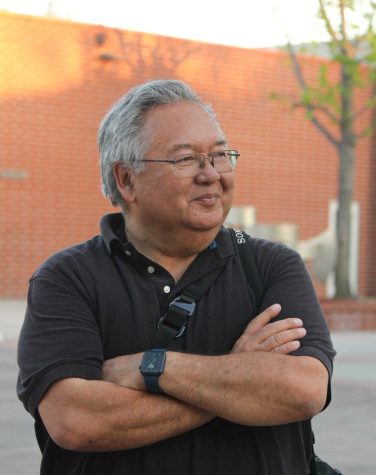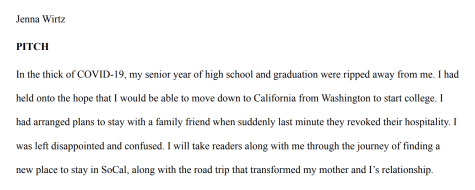A Room for the Downtrodden
Confronting caste discrimination with Kingdom reconciliation

“Rachel’s research and preparation to tell the story of the Dalit woman showed deliberate empathy and excellent journalistic integrity to the story and the process.” Dr. Welter, professor for International Journalism
In India, a Dalit, or outcaste, woman, has three strikes against her: she’s poor, she’s “untouchable” and she’s a woman. And when she is dealt with harshly whether that’s economically or sexually, there is no apparent justice. The world and the Church are silent.
On Sept. 29, a 19-year-old Dalit woman died of injuries after she was allegedly gang raped by a group of men of a dominant caste in a field in Hathras district, located in the north Indian state of Uttar Pradesh. According to an article in the Washington Post, the victim was reportedly from the Valmiki community, a caste which is considered “lowest in hierarchy” even among Dalits. As a result, the victim was treated with less urgency by doctors at the local hospital. When she died of injuries, her body was allegedly cremated by police in a field outside of her home, denying her family their right to a proper burial. Instead of justice, this woman received silence. The question is why?
COMPLEXITIES OF CASTE
Although caste discrimination was legally outlawed in 1950, the prominence of sexual exploitation of women in lower castes highlights the systemic inequity of the caste system. The constitution, signed by the Constituent Assembly and effective Jan. 26, 1950 guaranteed equality before the law and aimed at overturning past social practices like “untouchability.” Yet, recent events like the gang rape of a Dalit woman proves this “untouchability” is still very real.
Todd Emerson, Board Chair of Truthseekers International, an organization committed to advocating for those in the lower castes, gives an overview of how the caste system is laid out. He explains that the Brahmins are at the top, making up about 2% of the population. Then there are the Kshatriya, the warriors caste and the Vaishyas, the merchants caste. These three higher level castes make up at most 20% of India. The fourth caste is the Other Backward Castes [OBC] and is made up of thousands of subcastes, such as the farmers caste (Lodhi) and gardeners caste (Mali). According to the Mandal Commission report of 1980, the OBC comprise 52% of the population. The bottom of the caste system consists of the outcasts—Christians, Muslims, Buddhists, Tribals and the Dalits, the Hindu outcastes.
According to a 2001 Human Rights Watch report on India, the caste system is perhaps the world’s longest surviving social hierarchy. Created 3,000 years ago by invading Aryan tribes to prevent pollution of their race, the ordering of social groups is found on the basis of ritual purity and the individual’s station at birth—a person is both born and dies to a certain caste.
“Unfortunately, the caste system really does not allow people to pursue their dreams,” said Emerson. “If you’re born into a lower caste, the deck is stacked against you so severely, unless you’re a brilliant genius that can somehow get through.”
Mairin McCuistion, former Communications Manager at India Evangelical Mission (IEM), further explains this lack of mobility within the caste system.
“It’s difficult because it’s just so long-standing,” says McCuistion. “Unless you have education, there’s not really a way to move around a lot. But how do you get education? You need to be part of a family that can send you to a school that can provide good education. So, it’s just a self-perpetuating system and it’s very hard to break out of this loop.”
McCuistion observed for herself the complexities of this system when she traveled to India with IEM. While she was there, she spent most of her time in Southern India in Mumbai where caste differences were evident. She describes her observation of these differences as heart-wrenching.
“You so badly want to help, but don’t know the best way to do it. And that’s kind of what’s paralyzing in the moment,” McCuistion said. “Because what really is needed is substantial societal change.”
As seen even in the United States, addressing systemic injustice is not so simple when it is embedded deep in the nation’s fabric. In India, the caste system is woven into the dominant religion of Hinduism. Sunil Sardar, founder of Truthseekers International, shared that, because of this, there is no justice in the caste system. Sardar argues against the popular view that Hinduism is a peaceful religion and explains that it is actually the root of the system’s evil because it is based on the lies that humans are created differently and therefore should be treated differently. Sardar claimed that while Gandhi did much to promote world peace, his efforts to keep the caste system in place cemented the shift from Hinduism to Brahminism, where the top remain at the top and the bottom are trapped in the never-ending loop.
“It’s a four-story building without a staircase,” said Sardar.
Grant McFarland, who works with Sardar at Truthseekers, shares more on this idea.
“Probably the most difficult reason why it’s impossible to eradicate or overcome caste is because it is founded in the religion of Hinduism. It’s in the Sanskrit scripture. It’s in all their texts,” said McFarland. “And so, you’ve got to address the root issue which is the religion.”
Amy Nannan, an international student at Rosemead School of Psychology, explains that, beyond religion, the caste system is closely tied to India’s collectivist culture.
Nannan gives an example of how even in the U.S., members of the same caste tend to stick together. She noticed this when she attended an Indian Fellowship and met others from her caste.
“[Caste] probably helps communities who have similarities connect with each other more tightly,” said Nannan. “If you need to break the caste system, you need to come out of your comfort zone and want to associate with everyone. So, probably people feel safer and more connected within their own family and they don’t want to break away from that.”
THE BOTTOM OF THE FOUR-STORY BUILDING
So, if the caste system simultaneously inspires collectivism and discrimination, it begs the question—why are Dalits at the mercy of this ancient tradition?
Gospel for Asia explains that Dalits fall beneath the four main caste structures. Due to their status, they are treated differently.
James Vemu, a member of a lower caste, spent his childhood in a rural village in Rajahmundry of Andhra Pradesh, South India. He explained that in rural areas, the caste system is more prevalent because those in the higher caste have more authority to treat lower castes harshly. He gave an example of his friend who is allowed to retrieve water only after the higher castes have visited the water facility. This is to avoid interaction between the castes.
Emerson provided another example and explained that in rural areas you may see Dalits carrying cups when they travel because store owners will not touch the same cup as a Dalit. Instead, they will pour the water out into the Dalit’s cup, maintaining an untouchable distance.
Although Dalits comprise 200 million people, they barely fill the 25 percent of government jobs and university spots that the 1950 constitution guaranteed for Dalits. Meanwhile, members of the highest caste, the Brahmins, control 78 percent of India’s judicial posts, though only making up 5 to 9 percent of India’s 1 billion people. So, we return to the system that keeps the low castes and outcastes trapped at the bottom. Add on the cultural patriarchy and we come closer to our answer for the lack of justice for the Hathras woman.
A TRIPLE BURDEN—CASTE DISCRIMINATION, GENDER BIAS, ECONOMIC DEPRIVATION
“With rape, it does reflect a difference in caste system, but you can pull out several other reasons behind it, like gender bias,” said Nannan. “It’s a patriarchal culture. Men have a stronger power.”
Nchumpemo Shitio, a pastor of a church in Nagaland, a majority Christian state in Northeast India, works with his wife at Galilee Home for Children. Through this ministry, they work with young girls who have very little rights because of their gender and social class.
“They don’t have freedom,” said Shitio. “Once she was born into this world, she faced partiality. My culture won’t allow a woman or a girl to have their own rights.” Shitio explained that in many rural areas, when young girls lose both of their parents, they are often forced into becoming domestic slaves for other homes. There, they are often mistreated sexually. Shitio shared that even in Nagaland, a Christian state, women are left to silently defend themselves.
“Here you will find big churches, but you will find no room for those downtrodden,” said Shitio. “There are many women that hang themselves because there is no one to encourage them. The girl child is raped, but there is no one to raise their voice on her behalf. The Church is silent.”
KINGDOM RECONCILIATION
In a country that is so culturally rich and beautiful, there is brokenness. How different it could look if both the Indian Church and the International Church spoke up.
“I think this generation is very aware of justice issues,” said Emerson on why students should get involved. “I honestly can’t think of another country where there’s more of a need than India.”
McCuistion who led the India Project when she was a student at Biola University shares her own reasoning for stepping into God’s work in India.
“We are all His image-bearers. Because of this and our call to pursue justice and reconciliation, we are called to boldly confront injustices across the globe,” McCuistion said. “In Jesus’ ministry, he defied social expectations of the day and he ministered to who was considered ‘the other’ or the untouchable.”
Reconciliation comes when both parties are willing to break down those boundaries. Sardar shares how Truthseekers International approaches this work of reconciliation. He explained the time when he and a team from the U.S. traveled to a rural village and met with the scavenger caste (Walmikies), the lowest of the low castes. There, in the outskirts of Delhi, Sardar and the team washed the feet of the Walmikies then sat down and shared a meal with them.
“Jesus knew after he washed the feet of his disciples, how much eating together is important,” Sardar explained. “We take it for granted, but in India, it makes so much difference because even in the home, they don’t eat together. So, washing the feet and eating together. That is reconciliation.”
Reconciliation does not only take place within one context. When the International Church partners with the Indian church, the work of reconciliation can take off. Tom Ward, who serves at a missions organization in India shares the story of Aruna, a girl, who much like the Hathras woman, was downtrodden. When Ward and his team discovered that Aruna’s mother had plans to marry Aruna to a 30-year-old for a $200 dowry, they extended their hand and paid for the dowry, relieving the family of financial burden and rescuing Aruna from the reality of child marriage. Aruna and her entire household gave their lives to Christ in the following years.
This is what Kingdom reconciliation can do. When image bearers extend their hand to the oppressed, the downtrodden will find a room in the Kingdom. Jesus guaranteed this when he offered living water to the Samaritan woman in John 4.
Much like the Dalit woman in Hathras, the Samaritan woman had three strikes against her: she was a sinner, a foreigner and a woman. Like the Dalit man that Vemu spoke of who drew water at the well at a certain time, the Samaritan woman went to the well in the middle of the day to avoid others. Like Aruna who grew up in the slums, the Samaritan woman was an outcast. Yet, Jesus approached her. If Jesus extended his care to an outcast foreigner, where does the Global Church stand when the image of God is persecuted 8,000 miles away?















